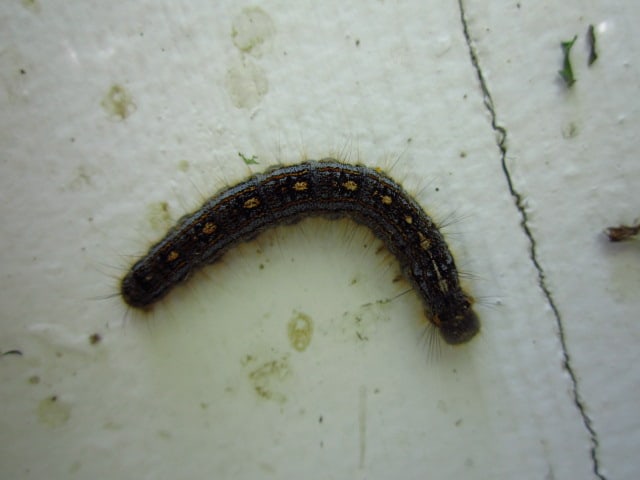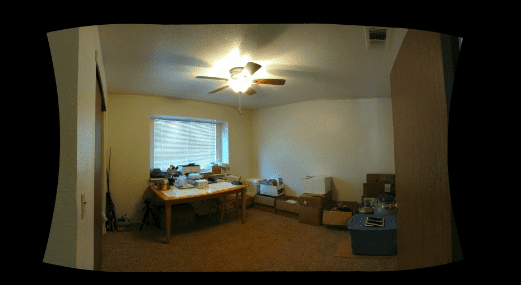Microscopy is a useful tool to diagnose honey bee problems. While working on some content for eXtension.org, I helped record the following video. These bacterial spores where found in a comb showing symptoms of American foulbrood disease. Paenibacillus larvae With Brownian Motion From a Honey Bee Colony Video description: Spores of the causative agent of American foulbrood disease in honey bee colonies are shown here. Paenibacillus larvae spores (seen here at 1000x) display brownian motion when the microscope slide is prepared with the hanging drop method. Acknowledgements: Organized, prepared slide: Michael E Wilson, University of Tennessee; videography & microscopy: Ernest Bernard, University of Tennessee; Video…
Category: Pest and Disease Control
Phorid Fly (Light Trapping)
The past few months I have been trying to capture honey bees that are infected with Phorid Flies in the Chico, CA area. So what is a Phorid Fly? It is a fly commonly referred to as the humpback-fly because of its appearance. Previously the fly was known to parasitize bumble bees and paper wasps but has now transferred host and is able to reproduce using the honey bee (Apis mellifera). It has been termed the “Zombee” because once parasitized, the honey bee behaves irregularly, taking flight at night and dying away from the hive. More information on this name and the fly can be…
Antlions (Myrmeleontidae)
Previously I wrote a blog about an insect known as a “Wormlion.” I suspected this insect to be an Antlion at first. I then figured that not many people knew what an Antlion was so I figured I would blog about them. Antlions are in the order Neuroptera which in English translates into “nerve-wings.” An Antlion is the larval stage of the insect; these are also referred to as “doodle-bugs.” They call them doodle-bugs because when you place these insects on sand or loose dirt, they will crawl backwards making a distinguishable trail and eventually burrow down into the medium. In the wild you can…
Tropilaelaps Mites
Among the many diseases and pests that the APHIS National Honey Bee Survey samples are analyzed for is the exotic parasite, the Tropilaelaps mite. These mites are native to tropical Asia and are a serious threat to the honey bee. While they naturally use the giant honey bee (Apis dorsata) as their host, Tropilaelaps mites have easily transferred to the European honey bee and other Asian honey bee species; however fortunately for us, for the time being, they are not known to be found in the US. Pictured here, the mites are reddish brown in a shade that is very similar to that of Varroa…
It’s Raining Frass!
In early June I experienced an outbreak of forest tent caterpillars (FTC), Malacosoma disstria, while sampling at an apiary in west-central Minnesota. Not only were the hive lids covered with frass, the technical term for insect feces, but the caterpillars themselves were falling on both the lids and my shoulders as I worked. According to the Minnesota Department of Natural Resources, FTC has been in the outbreak stage in west-central counties of Minnesota for several years, potentially numbering from one to four million caterpillars per acre. In between outbreaks FTC can be nearly undetectable. The larval caterpillars emerge from over-wintered egg masses around mid-May and…
Honey Bee Lab from Home
From time to time we are approached by beekeepers who are interested in setting up their own labs so that they can take samples of their bees and test them for Varroa mites and Nosema spores. Most beekeepers know what a Varroa mite looks like so identification usually isn’t an issue. Counting Nosema spores can be a more daunting task, especially if you are trying to quantify spore loads. Seeing an image of a Nosema spore on the internet or in a book can make things easier but until you see one yourself under a microscope and have someone verify the identification it could be…
Pest and predators of honey bees
As the weather starts to warm and flowers start to bloom, honey bee colonies start hoarding pollen and nectar to rear brood. At the same time, honey bee pests start to awaken from their winter slumbers or eclose from an egg. What are these pest interested in? Most pests feed on the bees themselves, bee brood (for protein), sugar/corn syrup or pollen patties. The chances of these pests attacking hives are higher when food is scarce or when there are large apiaries of 40 or more hives. Some beekeepers use electric fences for pest control in hopes to deter some of these pests (image below…
Long-term or short-term lease?
It was a couple weeks ago that Heather, Jennie and I were talking about using drone comb as Varroa management in a colony. Drone larvae are particularly attractive to Varroa mites. By adding drone comb to a hive, a beekeeper is creating a lure for the mites in the hope that they will go to the drone larvae instead of infecting precious worker larvae. Once the drone brood is capped, the beekeeper removes the frame and freezes it, thoroughly killing the pesky mites. While it is apparent that Varroa are attracted to drone larvae, it occurred to me, why is this so? What makes drone…
Honey Bee Worker vs. Varroa Mite
http://www.youtube.com/watch?v=Ew2NTu1gdII The holidays are over and it’s time for us to gear up for another round of sampling that will most likely begin the last full week in January. Holding yards are popping up all over Butte County and the weather has been much more enjoyable then I am used to. The bees seem to be enjoying it as well. Last week it was dry and in the upper 50’s during the day, lending an opportunity for them to forage and clean house before being moved into almonds February 1st. It also gave us another opportunity to go through our roof-top hive. The hive is…
Hive Beetles in Paradise
My primary purpose for going to Hawaii was to share and show Hawaiian bee breeders the type of work we are doing with the California bee breeders, and to see if they would be interested in participating in the future. It was also to train the two women I talked about in my last post, Danielle Downey Lauren Rusert, to assess colonies and take samples the same way we do in CA. This way, they will be able to work with the bee breeders in the future and be a part of the BIP. I visited a total of four beekeepers during my visit and…


